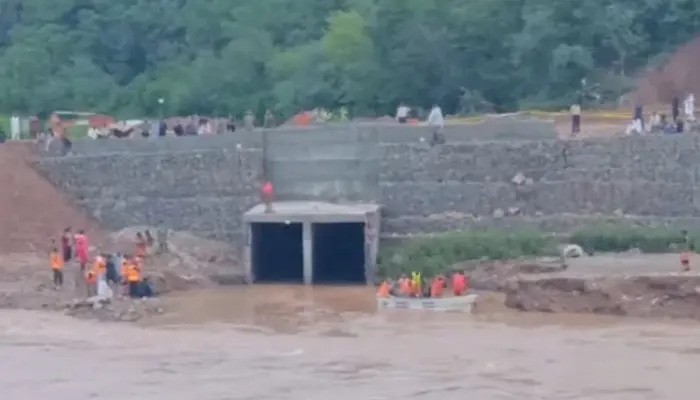The Pakistan Meteorological Department (PMD) has warned of localised flooding and disruptions in northern areas over the next twelve hours. Heavy rainfall is expected in multiple regions, raising concerns about flash floods and waterlogging. Meanwhile, southern Pakistan will continue to experience intense heat and high humidity levels.
Rain Predicted in Northern Regions
According to the PMD, upper Khyber Pakhtunkhwa, Gilgit-Baltistan, the Pothohar region, and northeast Punjab will see significant rainfall during this period. These areas are under a high-alert advisory as the downpour could cause flash flooding, especially in low-lying zones and urban areas with poor drainage.
The department urges residents in these regions to stay alert and avoid unnecessary travel. Commuters are advised to take precautions, especially during peak rainfall hours.
Flash Flood Risk and Disruption Warnings
With saturated ground conditions from previous rainfall, the upcoming heavy showers could push certain areas toward temporary flooding. The PMD specifically warned that local streams and nullahs may overflow, potentially disrupting traffic and damaging infrastructure.
City authorities and emergency response teams have been instructed to stay on standby, particularly in areas historically vulnerable to flash floods. The public is also advised to follow official weather updates and stay connected with local authorities.
Read: Monsoon Returns: Karachi Gets Light Rain, More Rain Ahead
Weather Outlook for Balochistan
In contrast to the rainfall in the northern regions, Balochistan is expected to remain relatively calm over the next twelve hours. The PMD did not issue any severe weather alerts for the province. However, mild weather patterns and overcast skies could still develop in its northern districts.
Southern Pakistan Remains Hot and Humid
While the north faces rain and flood risks, the southern parts of the country continue to deal with sweltering heat and high humidity. Cities such as Karachi, Hyderabad, and Sukkur are experiencing above-normal temperatures paired with sticky air. Health officials are warning residents to stay hydrated and avoid exposure during the afternoon hours.
The PMD has not predicted any rainfall relief for the south in the immediate future, and temperatures are expected to remain elevated over the next two days.
Morning Temperature Overview
This morning’s temperatures reflected the weather divide across the country:
-
Islamabad recorded a pleasant 25°C with partly cloudy skies.
-
Lahore stood at 28°C, with humid air starting to build ahead of expected rainfall.
-
Karachi reported a warm 30°C, with humidity making conditions feel hotter.
-
Peshawar registered 27°C under light cloud cover.
-
Quetta and Gilgit both measured 26°C, indicating mild but possibly shifting weather patterns.
-
Murree, with its elevation, recorded a cool 15°C and light fog in surrounding areas.
-
Muzaffarabad stood at 24°C, also bracing for expected rainfall later in the day.
Advice for Travellers and Residents
Travelers heading toward northern areas, especially Gilgit-Baltistan and Murree, should exercise caution. With the risk of landslides and flash floods in hilly areas, road conditions may deteriorate rapidly.
Residents in affected zones are advised to secure valuables, avoid crossing flooded roads or streams, and report any weather-related hazards to local disaster management authorities.
Ongoing Monitoring and Alerts
The PMD will continue monitoring the situation closely and provide timely updates. It recommends staying tuned to official bulletins and weather advisories, especially through radio, television, and official digital platforms.
Citizens can also sign up for SMS alerts or check the PMD website for real-time updates. Authorities assure that all necessary resources are being deployed to mitigate damage and respond to emergencies if required.
As Pakistan enters a crucial phase of the monsoon season, coordination between weather officials, local governments, and the public will be essential in managing the dual challenge of rain-induced flooding and heatwaves.
Follow us on Instagram, YouTube, Facebook,, X and TikTok for latest updates
